7 Best CMS For Apps In 2024
Have you ever found yourself tangled in the web of countless CMS for apps, trying to figure out which is the perfect fit for your project?
You’re not alone!
I’ve been there, too, and I know how overwhelming it can feel. But today, things change.
This friendly article explores CMS platforms’ crème de la crème solutions that help bring your app to life, making it more dynamic, user-friendly, and downright awesome.
Not only that, but they also ensure easy and quick maintenance and management, even for someone who’s not tech-savvy.
By the end of this list, you’ll be armed with the knowledge to choose a CMS that meets your app’s needs and feels like a trusted companion on your digital voyage.
Ready to get started?
This post covers:
The Best CMS For Apps
The top CMS platforms stand out for their robust features, scalability, and user-friendliness, making them the go-to choices for app developers and creators alike.
1. Contentful

Contentful stands out as the best CMS for apps due to its pioneering API-first approach, tailored for mobile-ready content delivery.
Unlike traditional CMS platforms that retrofit APIs as an afterthought, Contentful was designed from the ground up with mobile and API integration at its core.
This design philosophy ensures fluid content management and distribution across various mobile platforms, including iOS, watchOS, tvOS, and OS X.
Its RESTful JSON-based API is well-documented, simplifying the fetching backend content for app display.
Whether building a native app or aiming for a responsive mobile presence, Contentful’s mobile CMS solutions will do the trick in supporting your content strategy.
Key Features of Contentful:
- The API-first approach ensures smooth integration and content delivery across multiple platforms.
- Users can define and customize their content models to fit their specific needs. (Create structured content you can reuse across different sections of an app.)
- A powerful yet user-friendly rich text editor to craft and format content without technical experience.
- Robust tools for managing and delivering media files and optimizing them for different devices and bandwidths to ensure a smooth user experience.
Best for:
Contentful is for developers and content teams seeking a flexible, API-first platform to manage and deliver content seamlessly across multiple mobile and web applications.
Pricing: Contentful is free for individual projects. But it also offers paid plans, starting at $300/month.
Get Contentful2. Hygraph

Hygraph is a CMS for apps, offering fantastic flexibility and advanced features, making it future-proof for emerging devices.
It facilitates efficient collaboration between technical and non-technical teams with robust workflow management tools. Enjoy speeding up project timelines while maintaining content quality.
Dynamic content support and comprehensive localization capabilities enable real-time updates and global content reach, streamlining the content strategy.
As a headless CMS, Hygraph separates content creation from presentation, allowing developers to customize content display across multiple devices and enhancing user engagement.
This model, combined with a focus on performance and security, positions Hygraph as a top choice for app developers seeking a reliable, scalable CMS solution.
Key Features of Hygraph:
- Offers advanced workflow management tools that support custom roles, permissions, and scheduled publishing.
- Supports dynamic content, allowing real-time updates without impacting the release cycle.
- Provides robust features for managing content in multiple languages and locales from a single content piece.
- Natively supports multi-platform content delivery, making it suitable for any device capable of receiving content via API, from smartphones to smartwatches and even AR/VR platforms.
Best for:
Hygraph is for forward-thinking developers and content teams who need a versatile, secure, and API-driven platform to manage and deliver content across multiple devices and channels.
Pricing: Hygraph has a free plan, but you can upgrade at any time with their entry-level plan, starting at $299/month.
Get Hygraph3. Sanity
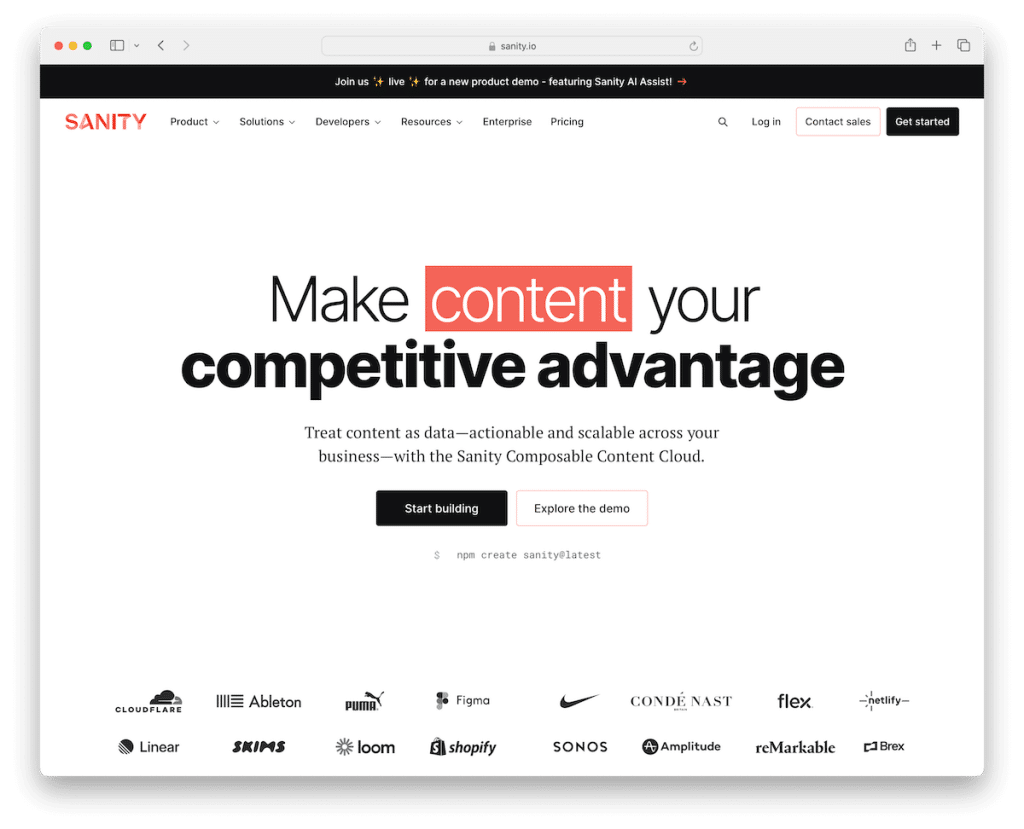
Sanity is a revolutionary CMS for modern app development, breaking the mold with its content-first approach.
Designed to cater to the dynamic needs of digital platforms, from smartphones to game consoles, Sanity ensures your content adapts and thrives.
Its core strength lies in content reuse, allowing developers to maintain consistency across all digital touchpoints.
Moreover, the platform is translation-ready and tailored for global reach, enabling personalized content delivery in any language. (Have you also seen these terrific multilingual CMS options?)
With its robust, scalable cloud infrastructure, Sanity guarantees reliability even during peak traffic times.
Tailored for developers, Sanity integrates seamlessly with React, allowing teams to work within familiar ecosystems while leveraging enterprise-grade features.
Sanity’s headless architecture and structured data models offer flexibility to compose rich, personalized digital experiences.
Key Features of Sanity:
- Allows reusing content across various platforms and devices, ensuring consistency and efficiency in content management and delivery.
- Sanity is built on a robust, scalable cloud infrastructure, ensuring high availability and performance.
- It is developed with React, making it a familiar and preferred choice for developers.
- Offers comprehensive enterprise features, including workspaces, Single Sign-On (SSO), dedicated support, and predictable pricing.
Best for:
Sanity is for development teams and content creators who need a flexible, scalable platform to craft and deliver personalized, multi-language content.
Pricing: Sanity is free and open-source CMS. However, it also has paid options, like Growth, that goes for $15/month per user.
Get Sanity4. ButterCMS
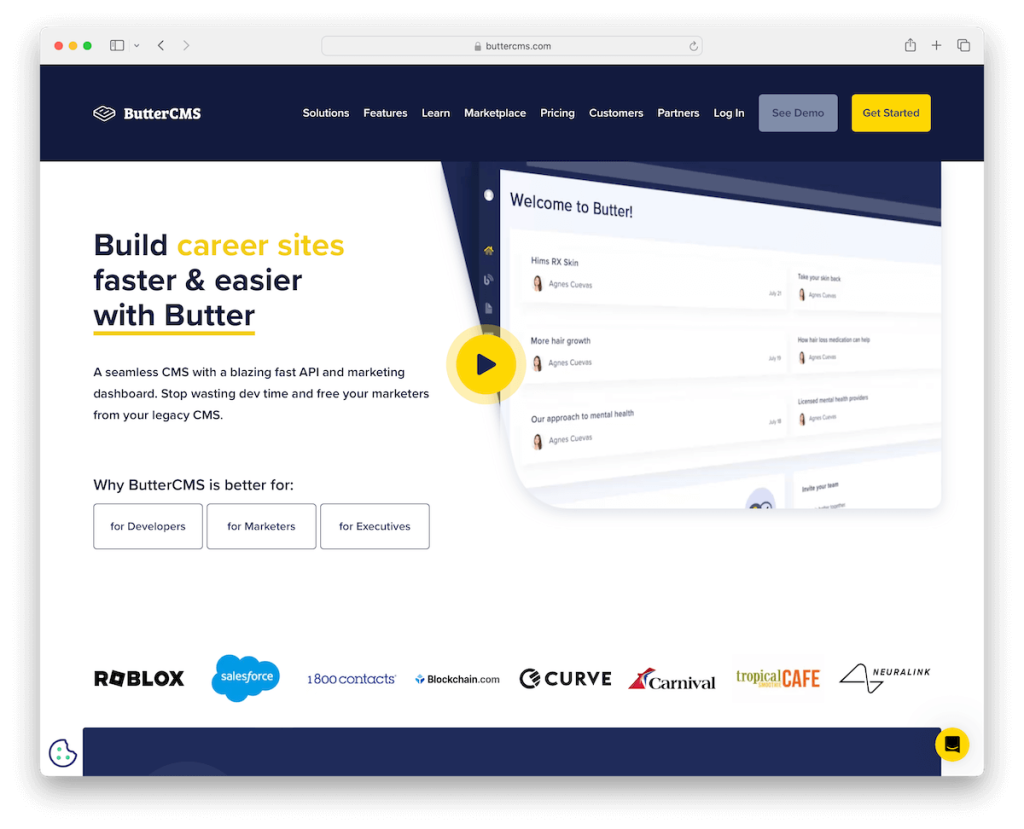
ButterCMS is an exceptional CMS for apps, blending ease of use with powerful API-first headless capabilities.
Its straightforward setup process means you can swiftly go from sign-up to content integration with minimal developer overhead. A very agile development environment, if you will.
Whether you’re working with Flutter, React Native, or any other mobile SDK, Butter’s API-centric approach ensures seamless content management.
ButterCMS simplifies content updates and enables non-technical team members to contribute effectively. It breaks down the barriers between content creation and app development.
By requiring no extra setup post-login to start utilizing its APIs, ButterCMS empowers teams to add and manage content, enhancing the workflow.
Key Features of ButterCMS:
- Provides a headless CMS that seamlessly integrates with any platform or device, offering flexibility for app development.
- It offers a straightforward setup process, allowing developers to integrate the CMS with their mobile applications.
- Offers built-in blog engine and collections features, providing tools for creating and managing blog posts or other content.
Best for:
ButterCMS is for mobile app developers and content teams after an easy-to-use, API-first headless CMS that minimizes setup time.
Pricing: ButterCMS is free for non-commercial projects. Its premium packages start at $99/month.
Get ButterCMS5. Strapi
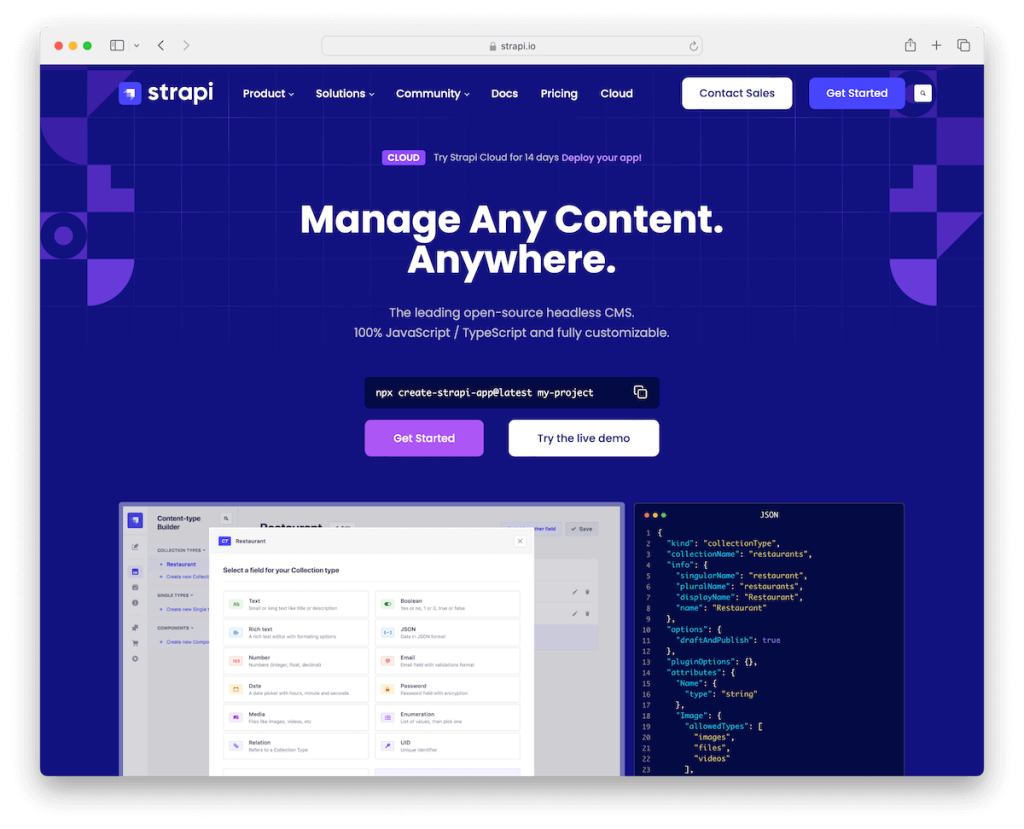
Strapi is a leading CMS for app development, offering speed and flexibility for delivering responsive content across mobile and web applications.
As an open-source headless CMS, it caters to iOS and Android platforms and Progressive Web Apps, ensuring broad compatibility. Its API-first approach, supporting REST and GraphQL, enables instant content delivery to numerous applications simultaneously.
Strapi eliminates content silos by centralizing content management in a single source for consistent updates across all platforms. (This cross-platform ease enhances operational efficiency, synchronizing all websites and apps.)
Those who aren’t tech-savvy enjoy a user-friendly admin panel for simple content management without relying on developers.
For businesses with advanced needs, Strapi’s Enterprise Edition offers sophisticated features like Role-Based Access Control, Single Sign-On, and dedicated support for taking things to the next level.
Key Features of Strapi:
- Offers RESTful and GraphQL APIs for seamless content delivery to web and mobile applications.
- Designed to serve content to iOS, Android, and Progressive Web Apps.
- Centralizes content management, eliminating content silos and ensuring consistent content updates across all digital properties.
- Provides a non-technical, intuitive admin panel so that marketing teams and content creators can work on their projects without developer intervention.
Best for:
Strapi is for devs and content teams looking for a flexible, open-source headless CMS that enables rapid, cross-platform content delivery and management.
Pricing: Strapi is free and open-source. But there’s also an option to go for paid self-hosted or cloud plans.
Get Strapi6. Storyblok

Storyblok is a CMS for modern mobile apps that streamlines personalized content creation, management, and delivery.
Its approach enhances user engagement by offering tools that prioritize user journeys without compromising performance.
With Storyblok, the complexity of content management is simplified through Composable Components and flexible content structures. Also, it grants control and adaptability for projects on both Android and iOS platforms.
Integration with other tech, including tools like Optimizely and Semrush, or the ability to forge custom integrations, further enhances the mobile app experience.
Storyblok centralizes all content, from landing pages to blog assets, in one cohesive CMS, ensuring simplified asset and user management capabilities.
Last but not least, its cloud-native headless architecture with mobile frontend SDKs and secure APIs guarantees speed, security, and scalability.
Key Features of Storyblok:
- Provides flexibility and control over content structures for easy reuse and repurposing of content across different channels and platforms. (Yes, including iOS and Android apps.)
- Enables content creators to see real-time previews of their work and utilize composable content modeling.
- Supports custom workflows for content creation, approval, and publishing processes, ensuring consistency and quality.
- Offers features like pre-rendered content, an intelligent global CDN, and caching strategies to enhance app performance and speed up load times.
Best for:
Storyblok is for teams that need a flexible, intuitive platform to create, manage, and deliver personalized, high-performance content for mobile apps and other digital channels.
Pricing: Storyblok has a free plan for small projects with an option to upgrade with any paid plans, starting at $106/month.
Get Storyblok7. Siberian CMS
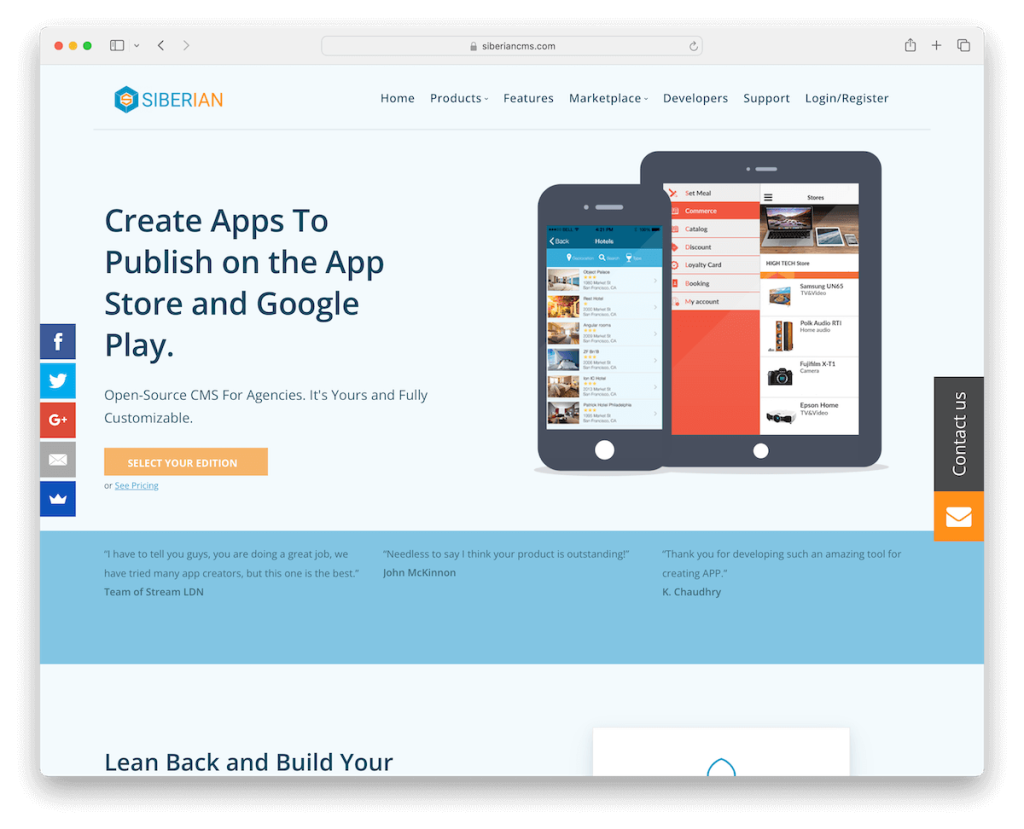
Siberian CMS pushes the boundaries for agencies and developers who need a fully customizable solution to craft and publish apps on the App Store and Google Play.
It requires zero coding knowledge, allowing the creation of iOS, Android, and web apps effortlessly in one seamless process. Plus, it’s open-source to ensure limitless creativity in feature development.
Ownership is a key advantage of Siberian; the software becomes an asset to your company, with full rights over the created apps, enhancing your brand’s value.
Its white-label capability allows for complete branding customization, ensuring every app reflects your brand identity.
Key operational features like an intuitive dashboard, comprehensive user management, customizable user roles, and multi-lingual support ease the app development process.
Key Features of Siberian CMS:
- It’s an open-source platform, giving you complete control over the software and the freedom to customize it according to your needs.
- Offers full white-label options, allowing agencies and developers to brand the apps.
- Features an advanced system for managing users and their roles for detailed control over access permissions.
- Includes features for automatic APK and iOS app publishing, streamlining the process of getting apps onto the App Store and Google Play.
Best for:
Siberian CMS is for those who value full ownership and customization. It offers a user-friendly, white-label solution for creating and managing branded mobile apps.
Pricing: Siberian CMS is free for single app creation. Or unlock more features and functions through its paid plans, starting at $85/month.
Get Siberian CMSWhat Is The Best CMS For Apps?
Skimming through all the CMS options for app development can be daunting, but a few standout solutions make the choice clearer.
Below, we explore the top three CMS platforms that blend flexibility, efficiency, and powerful integration capabilities:
- Contentful shines with its API-first approach, making it a breeze for developers to manage and deliver content across multiple platforms, including apps. Its robust infrastructure and seamless integration capabilities ensure your content is always dynamic and scalable.
- Hygraph stands out with its GraphQL-based content management, offering unparalleled flexibility and efficiency in fetching and utilizing data for apps. Its strong focus on content collaboration and workflow management makes it a go-to choice for teams aiming to streamline content operations and accelerate project delivery.
- Sanity offers a real-time, collaborative environment for content creation, bolstered by its portable text editor and customizable schema. This flexibility, robust API and rich ecosystem of plugins empowers developers and content creators to craft rich, personalized app experiences.
| CMS | Starting price | Free plan | |
|---|---|---|---|
| Contentful | $300/month | Yes | VISIT |
| Hygraph | $299/month | Yes | VISIT |
| Sanity | Free, open-source | Yes | VISIT |
| ButterCMS | $99/month | Yes | VISIT |
| Strapi | Custom | Yes | VISIT |
| Storyblok | $106/month | Yes | VISIT |
| Siberian CMS | $85/month | $85/month | VISIT |
How To Get Started With Contentful?
- Sign up for Contentful: Create an account on the Contentful website. Choose the plan that best fits your needs, ranging from their free tier for basic projects to more advanced plans for larger-scale apps.
- Create a space: Once logged in, create a new “Space,” a container for all your content types, entries, and assets. This space will be the central hub for managing your app’s content.
- Define content models: Set up your content models by defining content types. These are the structures for your content, like articles, products, or profiles, and can include fields such as text, numbers, media files, and more. Think of these as the templates for the pieces of content you will create and manage.
- Add content: Start adding content to your space by creating entries based on your content models. Populate the fields with relevant text, images, and other media that will appear in your app.
- Set up API access: Navigate to the “API keys” section within the Contentful web app to find your Space ID and Content Delivery API (CDA) token. These credentials will allow your app to fetch content from Contentful securely.
- Integrate with your app: Use the Space ID and CDA token in your app’s code to integrate with the Contentful API. Choose the appropriate SDK for your app’s platform (iOS, Android, web, etc.). Then, use the documentation provided by Contentful to guide your integration process, fetching and displaying content in your app as needed.
Frequently Asked Questions (FAQs)
What is a CMS in the context of app development?
A CMS for apps allows developers and content creators to create, manage, and modify content within an application without diving deep into code.
Why is choosing the right CMS important for my app?
The right CMS can significantly enhance your app’s functionality, user experience, and ease of content management, directly impacting its success and scalability.
Can I use a CMS for both web and mobile applications?
Yes, many modern CMS platforms are designed to be flexible and can be used for managing content seamlessly across web and mobile applications.
How does a headless CMS differ from a traditional CMS in app development?
A headless CMS provides more flexibility by separating the backend content management from the frontend presentation layer, which is particularly useful for apps that display content across multiple platforms.
Is it difficult to integrate a CMS into an existing app?
The difficulty varies depending on the CMS and the app’s architecture, but many CMS platforms offer APIs and SDKs to simplify integration.
Can I customize a CMS to fit my app’s specific needs?
Yes, most CMS platforms offer a range of customization options, from themes and plugins to custom development through their APIs.
How do I decide between an open-source CMS and a proprietary CMS for my app?
Consider your budget, the need for customizability, the importance of community support, and the total cost of ownership (including licenses, hosting, and custom development).
Can a CMS handle dynamic content and user-generated content in my app?
Yes, many CMS platforms are designed to handle dynamic and user-generated content efficiently, but check for specific features like content moderation and user management.
How does a CMS impact the scalability of an app?
The right CMS can significantly enhance the scalability of an app by providing the infrastructure to handle increased traffic and content volume without compromising performance, thanks to features like cloud hosting, efficient content delivery networks (CDNs), and easy integration with other services.

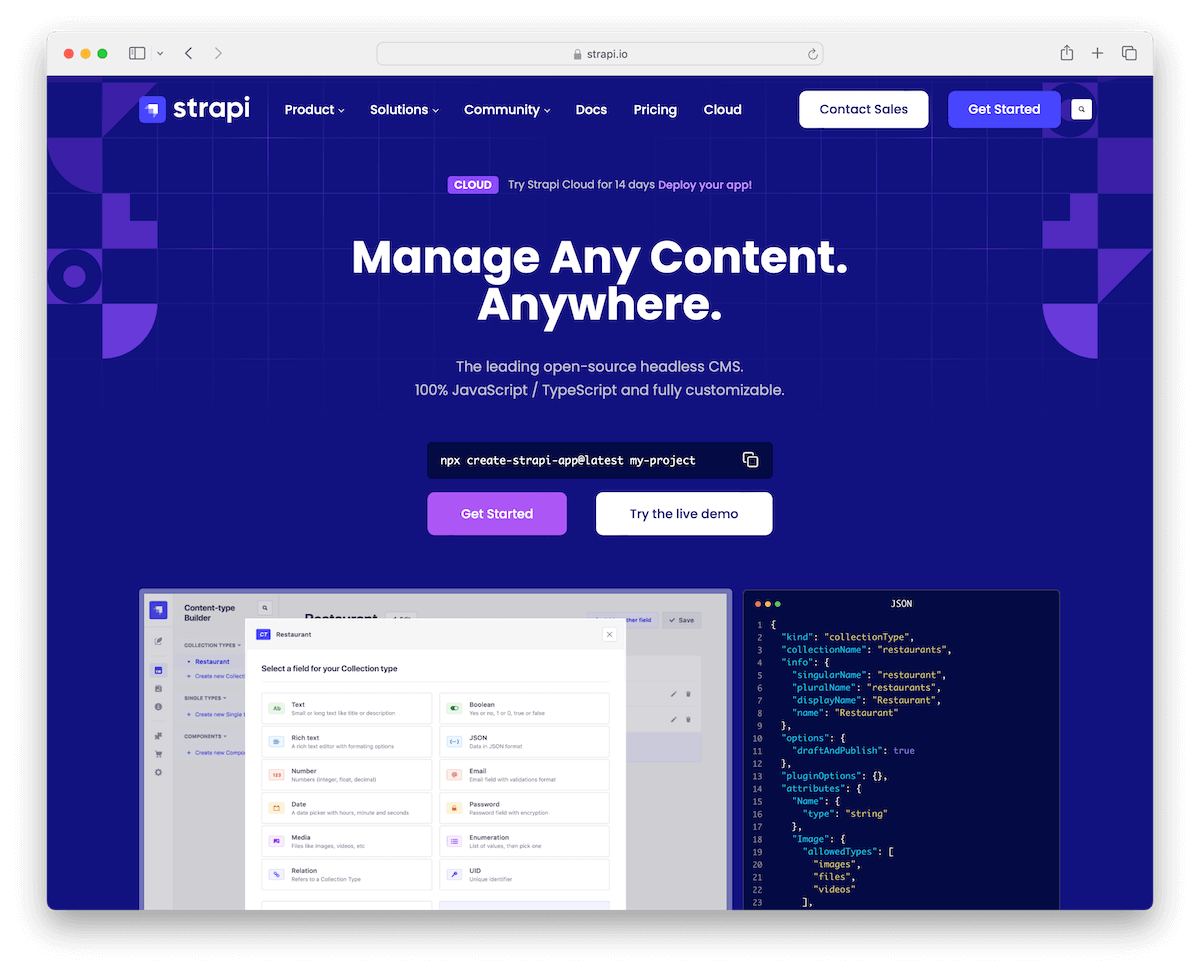
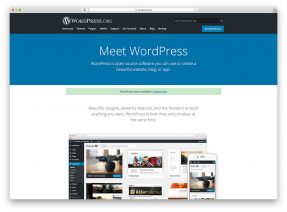
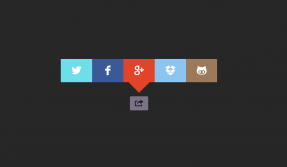

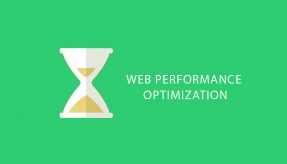

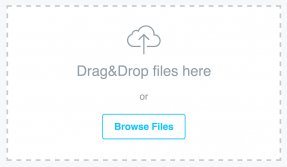
This Post Has 0 Comments